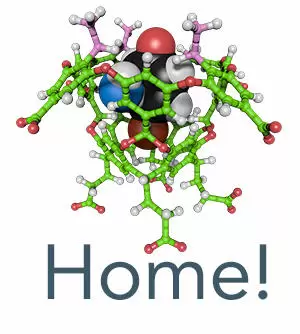Gibb, B. C. A Tale of Two Compounds. Nature Chemistry 2011, 3, 749-751.
Publications by Year: 2011
2011
Gibb, B. C. The Two-week Sabbatical. Nature Chemistry 2011, 3, 495-496.
Gibb, B. C. Departments of History. Nature Chemistry 2011, 3, 261-262.
Gibb, B. C. The Emergence of Emergence. Nature Chemistry 2011, 3, 3-4.
Gibb, B. C. Supramolecular Assembly and Binding in Aqueous Solution: Useful Tips Regarding the Hofmeister and Hydrophobic Effects. Israel Journal of Chemistry 2011, 51, 798-806.
Abstract The self-assembly of structurally discrete entities, and supramolecular chemistry in general, continues to expand into the aqueous realm. To do so, however, requires a firm understanding of the properties of aqueous solution, and how these “change the rules” for binding and assembly relative to organic solvents. In this mini-review we highlight the state-of-the-art understanding of the supramolecular properties of water, and how these influence the design of hosts and self-assembling systems.
Li, Y.; Giles, M. D.; Liu, S.; Laurent, B. A.; Hoskins, J. N.; Cortez, M. A.; Sreerama, S. G.; Gibb, B. C.; Grayson, S. M. A versatile and modular approach to functionalisation of deep-cavity cavitandsvia “click” chemistry. Chem. Commun. 2011, 47, 9036-9038.
The surface modification of deep-cavity cavitands has been demonstrated by using the azide-alkyne “click” coupling to attach dendritic macromolecules or linear polymers onto their periphery. The resulting set of macromolecular cavitands exhibited tuneable solubility yet retained the ability to encapsulate guest molecules.
Gibb, C. L. D.; Gibb, B. C. Anion Binding to Hydrophobic Concavity Is Central to the Salting-in Effects of Hofmeister Chaotropes. Journal of the American Chemical Society 2011, 133, 7344-7347.
Liu, S.; Whisenhunt-Ioup, S. E.; Gibb, C. L. D.; Gibb, B. C. An improved synthesis of ’octa-acid’ deep-cavity cavitand.. Supramolecular chemistry 2011, 23, 480-485.
An improved synthesis of a water-soluble deep-cavity cavitand (octa-acid, 1) is presented. Previously (Gibb, C. L. D. & Gibb, B. C., J. Am. Chem. Soc., 2004, 126, 11408-11409) we documented access to host 1 in eight (non-linear) steps starting from resorcinol; a synthesis that required four steps involving chromatographic purification. Here we reveal a modified synthesis of host 1. Consisting of seven (non-linear) steps, this new synthesis involves only one chromatographic step, and avoids a minor impurity observed in the original approach. This improved synthesis will therefore be useful for the laboratories that are investigating the properties of these types of host.
Gan, H.; Benjamin, C. J.; Gibb, B. C. Nonmonotonic Assembly of a Deep-Cavity Cavitand. Journal of the American Chemical Society 2011, 133, 4770-4773.
Liu, S.; Gibb, B. C. Solvent denaturation of supramolecular capsules assembled via the hydrophobic effect. Chem. Commun. 2011, 47, 3574-3576.
The organic co-solvent induced denaturation of a series of capsular complexes formed between trioxolane guests and a water-soluble deep-cavity cavitand was examined. The results obtained demonstrate a wide range of denaturation properties, and suggest the important factors governing capsule stability.

